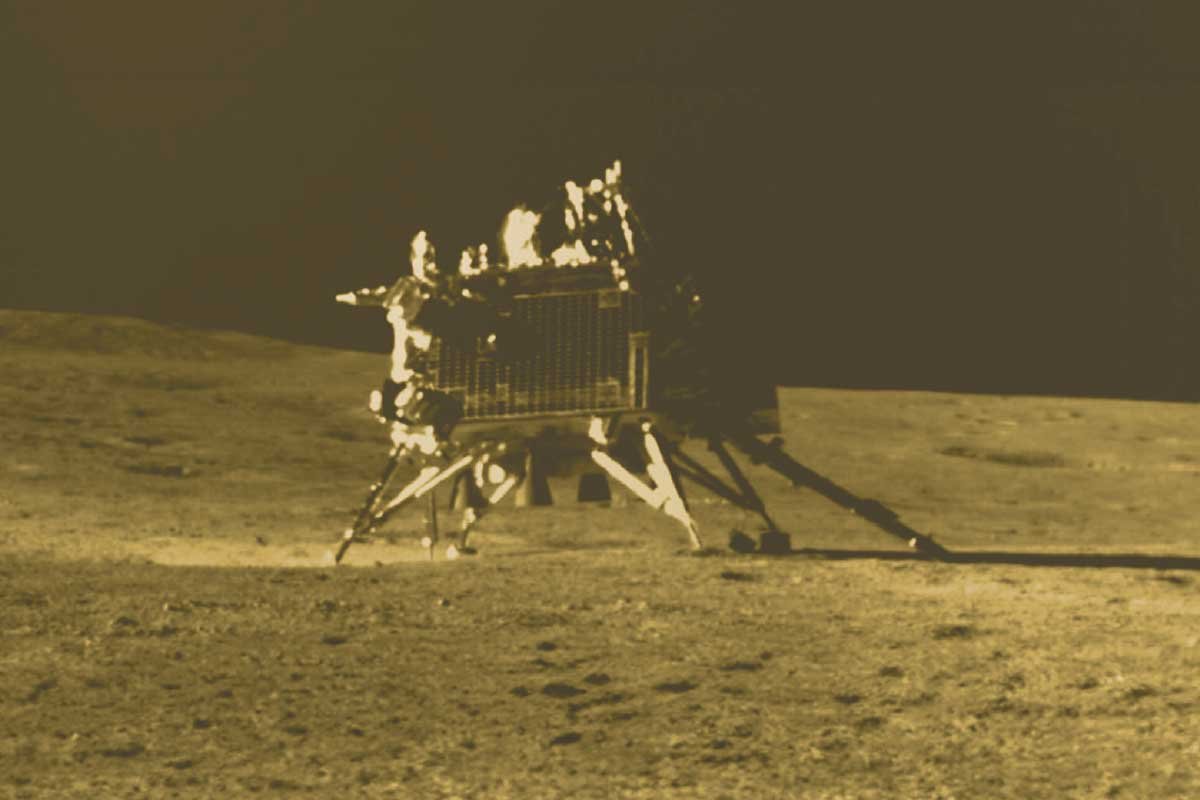Chandrayaan-3’s Vikram lander made quite an impact when it landed at the Moon’s southern pole on August 23. A recent study has unveiled that Vikram’s landing resulted in lunar dust being thrown up and the creation of a bright area surrounding it.
The Lunar Landing of Chandrayaan-3
When the Chandrayaan-3 Lander Module, known as Vikram, descended to the Moon’s surface in 2023, it created a spectacle. Scientists from ISRO’s National Remote Sensing Centre (NRSC) estimated that approximately 2.06 tonnes of lunar regolith (which includes dust and rocks on the Moon) were ejected and spread over an area of 108.4 square meters around the landing site. This occurrence is scientifically termed an ‘ejecta halo.’
Insights from the Research
These discoveries have been documented in a scientific article titled “Characterisation of Ejecta Halo on the Lunar Surface Around Chandrayaan-3 Vikram Lander Using OHRC Imagery,” published in the Journal of the Indian Society of Remote Sensing on October 26.
The Researchers Behind the Study
The article was authored by Swati Singh, Prakash Chauhan, Priyom Roy, Tapas R. Martha, and Iswar C. Das, all affiliated with ISRO’s National Remote Sensing Centre (NRSC) in Hyderabad.
Understanding the ‘Ejecta Halo’
The research involved a comparison of high-resolution images captured by the Orbiter High-Resolution Camera (OHRC) on the Chandrayaan-2 orbiter before and after Vikram’s landing. This enabled scientists to recognize the ejecta halo as a bright patch surrounding the lander. They estimated that this patch covered an area of about 108.4 square meters and suggested that roughly 2.06 tonnes of lunar regolith were ejected during the landing.
A Monumental Achievement
It is essential to highlight that Chandrayaan-3 achieved a significant milestone by becoming the fourth spacecraft to successfully land on the Moon. Furthermore, it was the first to land in the polar region. The mission included a lander module with an onboard rover, both of which conducted numerous measurements and experiments on the lunar surface.
A Pause in Exploration
After one lunar day, equivalent to 14 Earth days, Vikram and the Pragyan Rover entered a sleep mode. So far, attempts to reactivate them have not been successful. Nevertheless, the mission marked a significant step in India’s lunar exploration endeavors.
